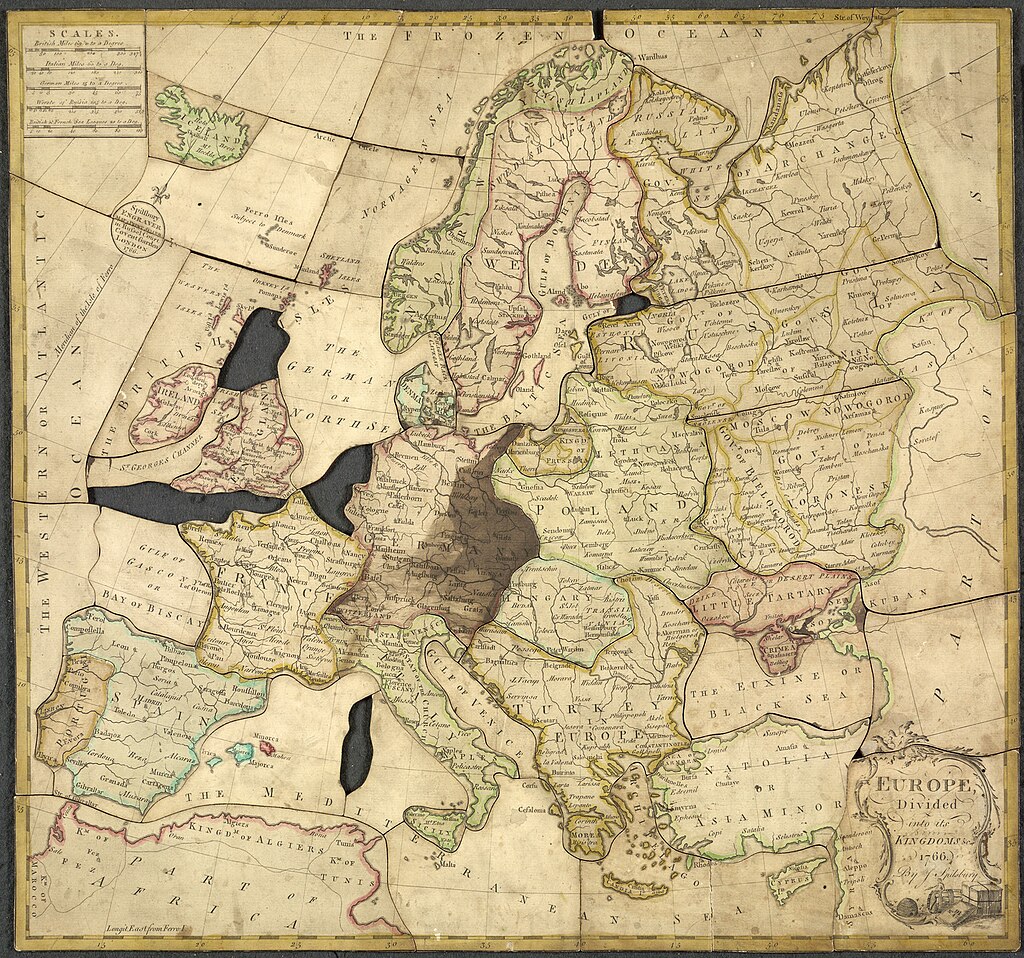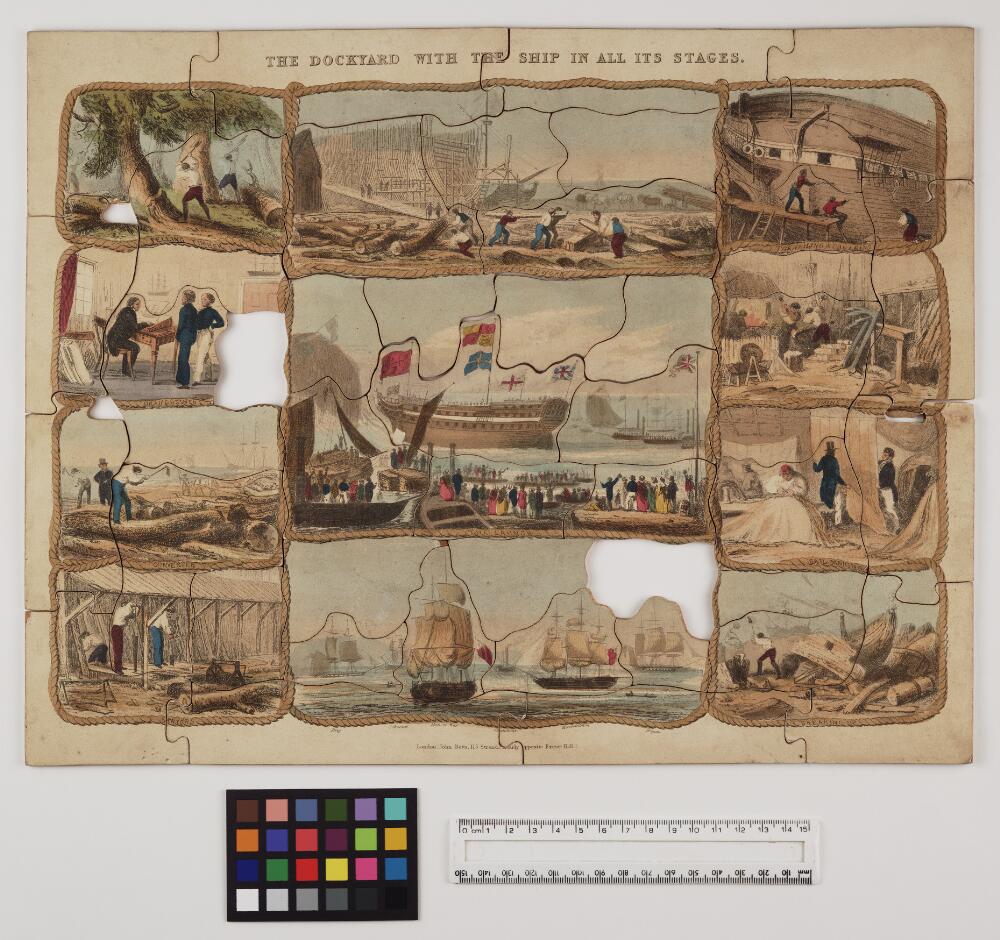Jigsaw puzzles are today one of the most popular types of board games in the world. They combine entertainment, relaxation, and mental exercise. However, few people know that the history of jigsaw puzzles goes back several centuries and that puzzles were originally created not for fun, but as an educational tool.
Origins: 18th Century and the First Puzzles
The history of jigsaw puzzles began around the 1760s in England. Cartographer John Spilsbury, who worked as an engraver and geography teacher, created the first puzzle. He glued a map of the world onto a wooden board and cut it into pieces along the borders of countries using a small hand saw. This was the first educational puzzle, a kind of learning tool that helped children study geography. These types of puzzles were called “dissected maps”.

Img 1. John Spilsbury's "Europe divided into its kingdoms, etc." (1766) - believed to be the first jigsaw puzzle. Image attribution: British Library , CC0, via Wikimedia Commons
At that time, puzzles were made exclusively from wood, and their main purpose was educational. They were sold in schools and private collections and were considered a luxury accessible only to wealthy families.
19th Century: Development and Popularity
In the 19th century, puzzles gradually gained popularity. They began to be created not only for children but also for adults. The themes of the images used for puzzles expanded - from geographical maps to illustrations from books, artworks, and everyday life scenes.

Img 2. British printed puzzle (1874). Image attribution: Betts, J. [author], Public domain, via Wikimedia Commons
During this period, puzzles were still relatively expensive because making them from wood required skilled manual labor. Nevertheless, their educational function and entertainment value made puzzles a fashionable pastime among the aristocracy and the middle class.
Early 20th Century: Mass Production
A turning point in the history of puzzles came in the 20th century. Cardboard began to replace wood, significantly reducing production costs. This made jigsaw puzzles accessible to a much wider audience.
Between 1900 and 1930, puzzles became a popular family pastime. The first factories specializing in puzzle production appeared. During this time, large illustrative images - from landscapes to advertising posters - gained popularity.
Interestingly, during the Great Depression in the United States, puzzles were especially in demand. They were an inexpensive way for families to spend time together, distract themselves from problems, and engage their minds.
Mid-20th Century: The Golden Age of Puzzles
After World War II, puzzle production reached a new level. Printing and cutting technologies became more precise, allowing the creation of bright and detailed images.
Big companies such as Ravensburger (Germany), Springbok (USA), and other brands emerged, setting quality standards for puzzles. In the 1960s-1980s, puzzles became one of the most popular hobbies worldwide. Manufacturers began experimenting with the number of pieces, shapes, and creating themed collections.
Modern Times: Digital Puzzles and New Formats
In the 21st century, puzzles have retained their popularity. Today, there is a huge variety of options:
- Classic cardboard puzzles - from small sets to giant puzzles with tens of thousands of pieces.
- 3D puzzles - models of architectural landmarks, globes, and other three-dimensional figures.
- Puzzles with unusual shapes - non-standard outlines and themed cutouts.
- Online puzzles - digital versions that can be assembled on computers, tablets, and smartphones.
Puzzles gained renewed popularity during the COVID-19 pandemic, when millions of people worldwide were looking for ways to stay occupied at home and unwind.

